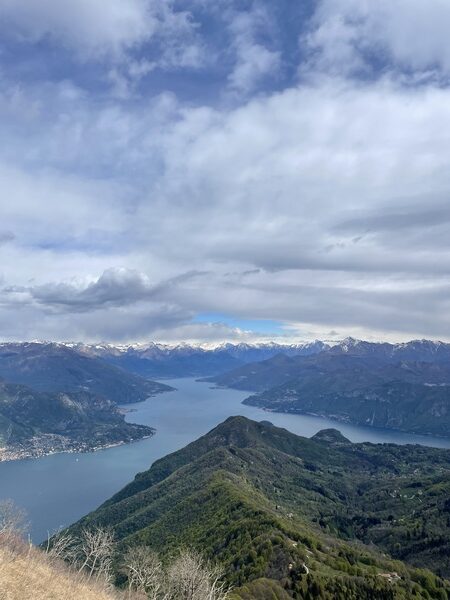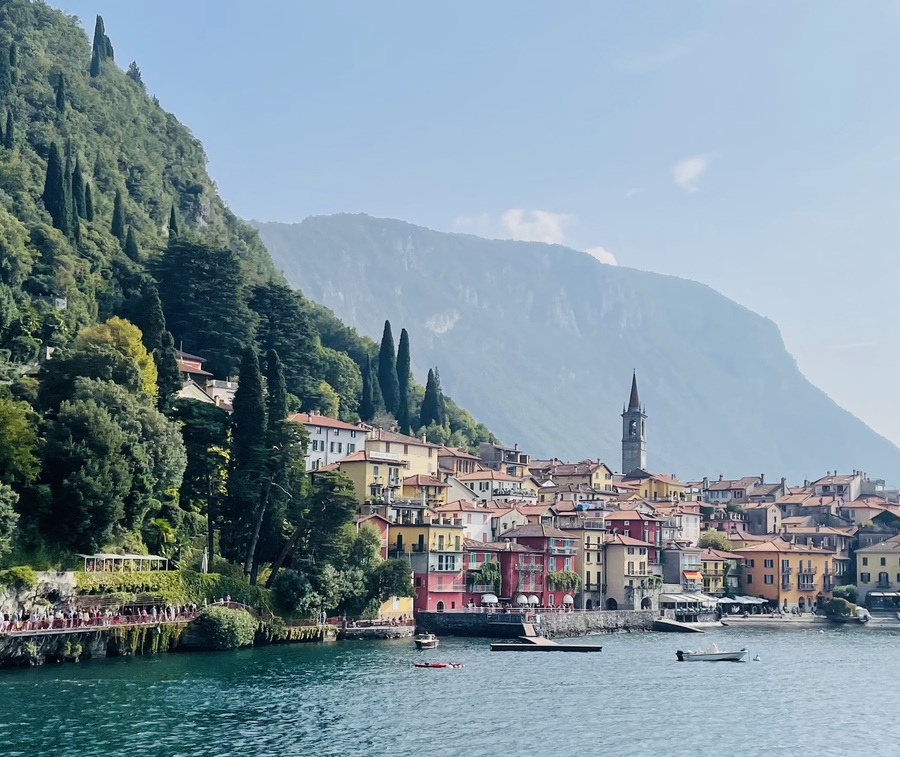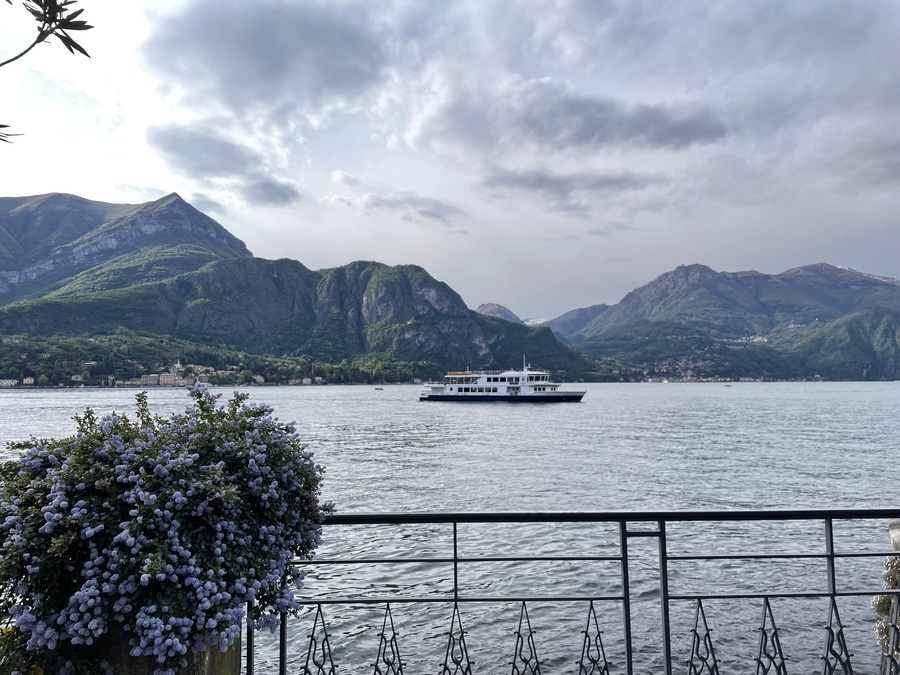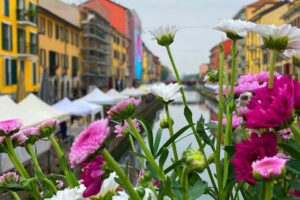Lake Como is a worldwide famous destination. Its villas with lush gardens, picturesque villages, and churches overlooking its sapphire blue waters, reflecting the peaks of the Pre-Alps, have made it a world-renowned tourist destination. Artists, poets, and writers of the past have been enchanted by it: Hesse, Shelley, Stendhal, Flaubert, Twain, Liszt. And… George Clooney! Our famous writer Alessandro Manzoni set his masterpiece “I Promessi Sposi” (“The Betrothed“) in the Lecco area.
What is so special about Lake Como?
The Lario, another name for Lake Como, appears as an inverted Y shape in the midst of the Lombard Pre-Alps, splitting into two branches in the south: the Como branch and the Lecco branch. At their intersection lies the so-called “pearl of the lake”, the famous and picturesque village of Bellagio, with its Italian gardens of Villa Melzi, rich with sculptures and rare plants.
The western shore of Lake Como is the most “noble” as it hosts the aristocratic residences of the 18th – 19th centuries. Here are some places worth visiting:
- The medieval village of Argegno
- Comacina Island, reachable by ferry
- The enchanting Villa del Balbianello in Lenno
- Villa Carlotta in Tremezzo, rich in artistic masterpieces and natural attractions with its blooming park
- Menaggio with its village and pleasant lakeside promenade
- The ancient village of Nesso
The less “noble” branch, my favorite, is the eastern one. Here, the landscape is much more rugged and wild, with mountains steeply cutting down to the water. The villas are beautiful but less grand compared to the other shore. Here, nature dominates. I am very fond of the villages of Varenna with its colorful houses clinging to the foot of the rocky cliff and Bellano with its gorge. I also recommend not missing Corenno Plinio. It is a tiny medieval village, quite off the tourist path, with a maze of steps (called “scalotte”) carved into the rock that descend to the small port.
A little further north, you cannot miss the Abbey of Piona, a corner of peace overlooking the lake, at the foot of Mount Legnone. The beautiful 13th-century cloister, and the vineyard, olive grove, orchard, and vegetable gardens are tended by the Cistercian monks who still live there.
Is it worth going to Lake Como?
Lake Como is a special place and visitable at any time of the year. It offers a multitude of things to do and see: touring the villages, historical villas, and Roman churches. Then there’s shopping, all kinds of water sports, hiking, climbing, and skiing. To visit the lake, having a car is not essential as it can be toured by ferry. It is therefore a place for everyone and for all seasons.
How many days in Lake Como is enough?
To visit Lake Como, it would be ideal to have 5 or 6 days available, so you could also include the city of Como, which is very beautiful and rich in important monuments. However, if well-organized, 2 or 3 days are sufficient. And if you only have one day? It’s possible, but you have to make drastic choices: avoid the cities of Lecco and Como and move towards the central part of the lake. I recommend including a historic villa and a couple of villages in your itinerary, moving by ferry.

Como Lake from Milan
This lake is an hour from Milan, making it an ideal destination for a day trip. Trains leave from Milan every hour, and the same for the return. If your destination is Como, you can take a train from Milan Porta Garibaldi or Milan Centrale to Como San Giovanni, or a train from Milan Cadorna to Como Lago.
The eastern branch of Lake Como is entirely covered by the railway network; starting from Milan Porta Garibaldi or Milan Centrale, you can get off at the stations of Lecco, Varenna-Esino, Colico, or one of the numerous stops of local trains. Alternatively, you can use a car, but be aware of traffic jams, especially when returning to Milan during the summer months.
Como Lake in Spring and Summer
Spring and summer are ideal for planning your itineraries. Moreover, summer offers the opportunity to enjoy the lake by visiting numerous free beaches. The perfect area for sailing, windsurfing, and kitesurfing enthusiasts is the North (Upper Lake). For canoe and kayak lovers, a less windy area such as the South or around Comacina Island is ideal.
In summer, you can attend numerous events, concerts, and festivals, one for each village. In the second half of June I would recommend the San Giovanni Festival, a fire works show with music. It is the oldest event on Lake Como in terms of tradition, art, and folklore, and it takes place in the lovely setting of Comacina Island.
Every year in July LacMus is an international classical music festival held in several locations such as Villa Carlotta, Villa del Balbianello, Comacina Island, and Villa Melzi in Bellagio.
It is worth mentioning that Villa Carlotta in Tremezzo organizes concerts and very interesting meetings in its splendid park.

Como Lake in Autumn and Winter
The lake welcomes many trekking and mountain hiking enthusiasts, with a wide variety of trails available. The king of all is undoubtedly the Sentiero del Viandante, a trail going from Lecco to the province of Sondrio. In total, almost 50 kilometers of continuous ups and downs along the coast, offering breathtaking views between the lake and the mountains. The Viandante attracts many trekking lovers, young and old, Italians and foreigners, for most of the year. By the way, even in Italy, on mountain trails, it is customary to greet people you meet. If it happens to you, remember that “buongiorno” or “salve” will do just fine! (If you need a review, here you can find a brief guide on Italian greetings).
The Grigne mountains, near Lecco, are a paradise for climbing enthusiasts.
The autumn months are dedicated to festivals and walks in the woods. You can go chestnut hunting, an activity still much appreciated by Italians on weekends.
If you visit the lake in winter and if you love skiing or snowshoeing, you are in the right place. The lake, with its surrounding mountains, welcomes you. To stay close to Milan, you can ski at Piani di Bobbio, near Lecco (just 30 minutes from Milan). If you have the desire and time to go further north, head to Bormio, a famous ski and thermal resort nestled in the Stelvio National Park. And after a day in the snow, sit down at the table and enjoy (without overdoing it!) pizzoccheri and polenta taragna, two of the many traditional dishes.


